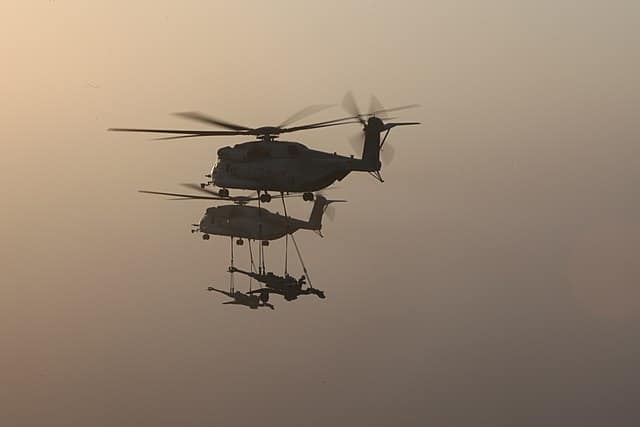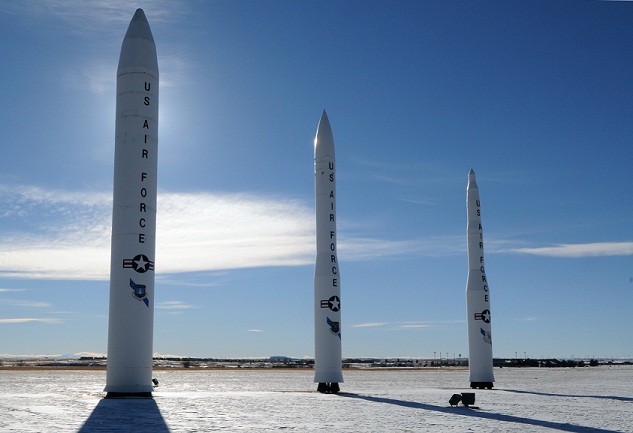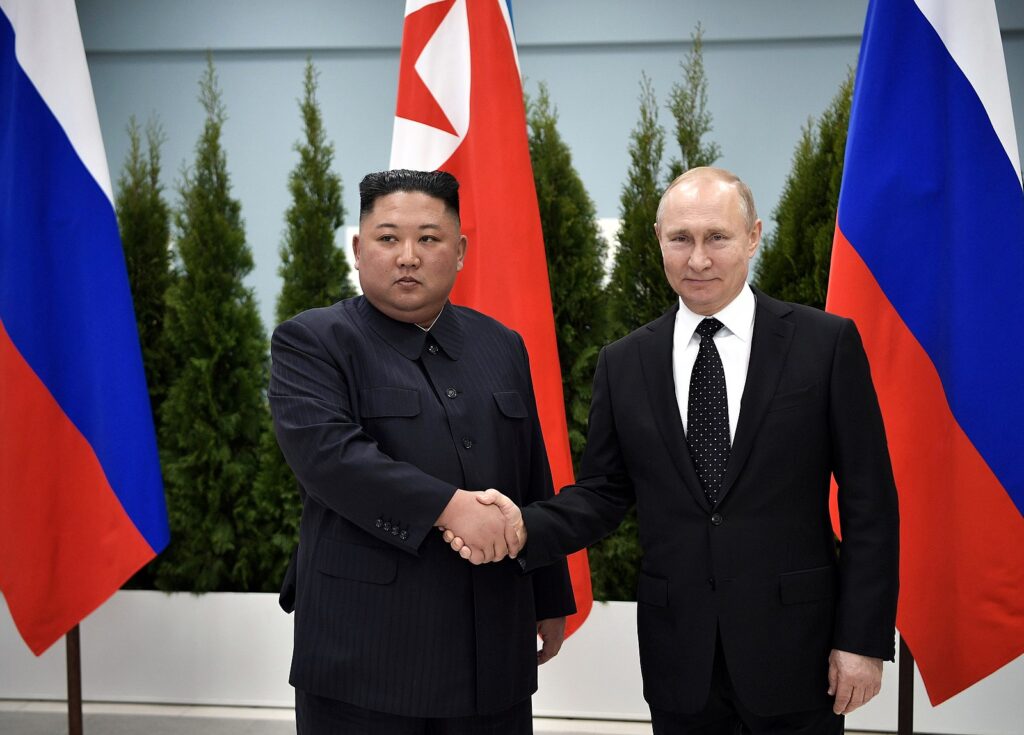The long-range fires that will define the Ukrainian counteroffensive
- By Stavros Atlamazoglou
Share This Article

In early June, the Ukrainian military launched its long-anticipated counteroffensive. Over the past few days, the Ukrainian forces have been pushing hard trying to break the Russian defenses but it isn’t an easy task.
Since last summer, the Russian military has been building one of the most extensive defensive lines in recent history, with in-depth fortifications of mutually supporting positions, anti-tank ditches, trenches, strongpoints, and minefields.
The Ukrainian military has been using its Western weapon systems to get an edge in this fight. Although several types of weapons will play an important role in the Ukrainian counteroffensive, long-range fires are up there when it comes to the systems that will define the fate of Kyiv’s offense.
M142 High Mobility Artillery Rocket System (HIMARS)
In the counteroffensive, the Ukrainian military has continued to significantly rely on the M142 HIMARS. Right now, the Ukrainian military is still searching for a weak link in the Russian armor to take advantage of.
Long-range fires will be particularly important in the success of the Ukrainian counteroffensive as the Ukrainian ground forces are looking to penetrate the extensive Russian armor. The two militaries are engaged in an intense artillery contest to gain the upper hand in the fighting. As the deadliest weapon on the battlefield, artillery is shaping the movements and decisions of the two forces.
There is plenty of footage from the ground in which Ukrainian M142 HIMARS are taking out Russian artillery pieces and counter-battery radars. With the help of unmanned aerial systems, the Ukrainians can find and fix Russian artillery systems and then call in M142 HIMARS strikes to destroy them with precision.
Related: This is the rundown of Wagner Group’s mutiny
#Ukraine: At least three more Russian 2S19 Msta-S 152mm self-propelled howitzers were destroyed by GMLRS strikes of the Ukrainian army near Novopetrykivka, #Donetsk Oblast. pic.twitter.com/eZAUNXExIp
— 🇺🇦 Ukraine Weapons Tracker (@UAWeapons) June 14, 2023
Introduced about a year ago, the M142 HIMARS has been a game-changer for the Ukrainian forces. The weapon system has allowed the Ukrainian forces to wreak havoc on the Russian supply lines and logistical nodes. Indeed, after 12 months in action, the M142 HIMARS still has no match on the battlefield, and the only way the Russian military has found to effectively contain the weapon system is to pull its supply lines and command and control posts farther back.
The M142 HIMARS has an operational range of 300 miles and can reach speeds of up to 53 miles per hour, making it a highly mobile platform that can move around the battlefield with impunity — especially in Ukraine, where neither side has air superiority. When it comes to its kinetic effect, the M142 HIMARS uses mostly the M31 Guided Multiple Launch Rocket System (GMLRS), which can destroy any target with extreme precision within a range of 45 miles. The M142 HIMARS’ flexibility combined with its operational range means that almost always, the Ukrainian crews have already moved to another fire position by the time their munitions strike their target, thus minimizing the danger of counter-artillery fire.
#Ukraine: Two Russian 2S19 Msta-S 152mm self-propelled howitzers were hit by GMRLS strikes of the Ukrainian Army North of Novopetrykivka, #Donetsk Oblast. pic.twitter.com/frwk3Psw9W
— 🇺🇦 Ukraine Weapons Tracker (@UAWeapons) June 14, 2023
The M142 HIMARS is responsible for the most Russian casualties in a single strike thus far in the war. On New Year’s Eve, the Ukrainian military managed to pinpoint the location of a makeshift Russian barracks in Makiivka, in the Donbas, by tracking the cellphones of Russian reservists. In the subsequent HIMARS strike, as many as 600 Russian troops were killed and several hundred more wounded.
The Ukrainian military also operates a small number of M270 Multiple Launch Rocket Systems (MLRS), a tracked and heavier equipped version of the HIMARS. Both weapon systems use the same munitions and have been key in restricting the logistical movements of the Russian forces.
The U.S. has sent Ukraine 20 M142 HIMARS, while the Pentagon has put an order for an additional 18 weapon systems that will be delivered to Kyiv over the next few years. In addition, the Ukrainian military has a fleet of around 15 M270 MLRS, courtesy of Germany, Norway, and the United Kingdom.
As of June, the Ukrainian forces haven’t lost a single M142 HIMARS.
M-777 155mm Howitzer
But the M142 HIMARS isn’t the only long-range fires weapon system that will likely define the Ukrainian counteroffensive. The reliable M-777 155mm howitzer is another key long-range weapon that is on the frontlines of the artillery war during Ukraine’s counteroffensive.
What makes the M-777 particularly deadly is its diversity as the howitzer can take a number of different munitions to deal with a wide range of threats.

To begin with, there is the M982 Excalibur precision-guided munition. Using GPS, this specialized artillery shell can take out targets with extreme precision up to 25 miles away, making it exceptionally valuable. And there is also the M795 explosive shell, which packs 24 pounds of TNT and has a kill radius of 230 feet. But the M-777 is good at defense too. Using the M718 Remote Anti-Armor Mine (RAAM) artillery shell, the M-777 can deny territory from an advancing enemy force. Each RAAM contains up to nine anti-tank mines that scatter on impact and create an anti-tank minefield remotely. For hitting standard targets, the M-777 uses the reliable 155mm artillery shell.
The Pentagon has sent Ukraine more than 7,000 M982 Excalibur rounds, around 14,000 M718 RAAM, and over 2 million 155mm conventional shells for the M-777.
The M-777 comes in at 35 feet with a 17-foot barrel and weighs around 9,300 pounds — significantly less than its competitors due to a mix of titanium and aluminum alloys. Indeed, the M-777 is so light for a howitzer that it can be strapped underneath helicopters or carried by C-130 transport aircraft.

The howitzer’s light weight also means that a well-trained crew can break up the artillery piece and move to another firing position in under three minutes. In the intense artillery duel taking place in Ukraine, this mobility could be the difference between an M-777 crew surviving to fight another day or dying by counter-battery fire.
The U.S. military has committed about 160 M-777 155mm howitzers to Ukraine.
Feature Image: A HIMARS system (Creative Commons)
Read more from Sandboxx News
- The FG-42 – The odd Nazi rifle created after a paratrooper disaster
- Offsetting China’s stealth fighter advantage: An in-depth analysis
- Unit 684 – The South Korean suicide squad with the tragic history
- What are Navy SEAL ‘duck’ insertions and which one would you prefer?
- Air Force won’t meet its recruitment goal, but the secretary isn’t worried
Related Posts
Sandboxx News Merch
-

‘AirPower’ Classic Hoodie
$46.00 – $48.00 Select options This product has multiple variants. The options may be chosen on the product page -

‘Sandboxx News’ Trucker Cap
$27.00 Select options This product has multiple variants. The options may be chosen on the product page -

‘Sandboxx News’ Dad Hat
$27.00 Select options This product has multiple variants. The options may be chosen on the product page
Stavros Atlamazoglou
Greek Army veteran (National service with 575th Marines Battalion and Army HQ). Johns Hopkins University. You will usually find him on the top of a mountain admiring the view and wondering how he got there.
Related to: Breaking News, Military Affairs, Ukraine

The B-2 Spirit is aging but still packs a bunch

How large are the nuclear arsenals of Russia and China compared to those of the US and its allies?

50,000 Russian and North Korean troops prepare to attack Ukrainian forces in Kursk
Sandboxx News
-

‘Sandboxx News’ Trucker Cap
$27.00 Select options This product has multiple variants. The options may be chosen on the product page -

‘AirPower’ Classic Hoodie
$46.00 – $48.00 Select options This product has multiple variants. The options may be chosen on the product page -

‘AirPower’ Golf Rope Hat
$31.00 Select options This product has multiple variants. The options may be chosen on the product page -

‘Sandboxx News’ Dad Hat
$27.00 Select options This product has multiple variants. The options may be chosen on the product page
